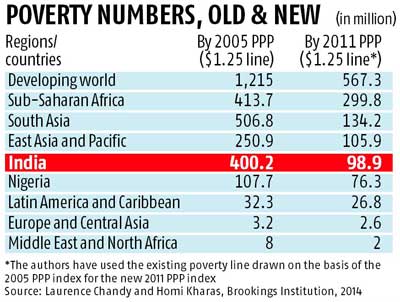While India is the world’s third largest economy, poverty is widespread and devastating. The country ads more people to its already massive population (1.2 billion) each year than any other country. Here are the top five things you should know about poverty in India.
1. One-third of the world’s poor live in India.
2. According to the World Bank, about 400 million Indians live in poverty and earn less than $1.25 per day.
3. According to UNICEF, 42% of children under five years of age are underweight, and 58% of children’s growth KindSight Sign Upis stunted due to poor nutrition.
4. Inadequate sanitation, nutrition and safe water results in what the World Health Organization estimates to be 93,000 to 153,000 deaths each year due to diarrhea.
5. Poverty increases gender inequality, where according to the U.N., female infanticide is not uncommon among the rural poor. The Hindu reports that “three million girls are missing” while comparing population studies between 2001 and 2011.
6. Forty seven percent of Indian girls are married before they are 18, and about 18% are married before they are 15 years old.
7. Nearly 50% of all Indians work in agriculture.
While poverty is rampant and results in devastating and deadly problems, there are some glimmers of hope.
child in poverty in IndiaFewer Indians live in poverty today than 22 years ago. In 1990 the poverty rate was 53%, while in 2012 the poverty rate was 22%. So, what is causing the turnaround?
One major influence is charity. Smart charity.
It’s one thing to provide food and clean water to people in poverty, and it’s an entirely different thing to train, equip and empower people in poverty to farm their land effectively and efficiently. Organizations like KindSight, Lutheran World Relief, CARE and OXFAM are a few that lead the charge.
American News Report ran a series on poverty in India, which you can find here. What our reporters found so compelling was not just about fighting poverty, but about culture and the human experience.
In a KindSight project designed to help women farmers in rural India, the women gained in so many ways they did not expect. Here are some of the things women participating in the project said.
“Before the project, we were all timid and shy. When an outsider came into our village we actually used to stay in our homes and hide. Being in the Self-Help Group has increased our confidence and we have courage to speak out,” said Mina Devi, a mother of three and member of her village’s Self-Help Group.
“I think it’s bringing a tremendous empowerment to women. We see them building their confidence and self-esteem, and I mean, that’s a great change to make in this part of the world,” said Rakhi Batacharia who helps oversee the Women Farmers in India project as India’s country director.
“Five years back, if someone had told me you could earn 20,000 INR [Indian Rupees] in one season, I wouldn’t have believed it,” Mina said, while pointing out that she earned more than twice as much income as her husband did last year.
“I’m so happy that it has worked out with this project. I’m so, so happy. Now I don’t have to worry anymore, I’m happy. My life is secure, and most importantly I can provide for my family.”
As charities continue to teach, train and supply rural farmers, they pass on more than new farming techniques, they empower people and change villages and cultures.
7 Things You Didn’t Know About Poverty in India & 1 Thing You Really Didn’t Know - American News ReportAmerican News Report








